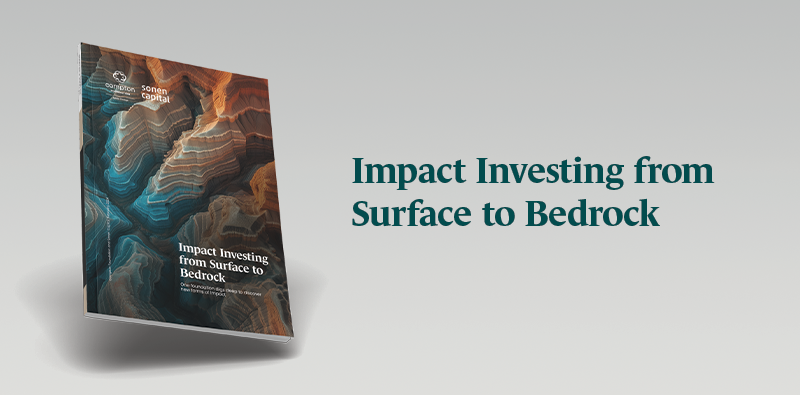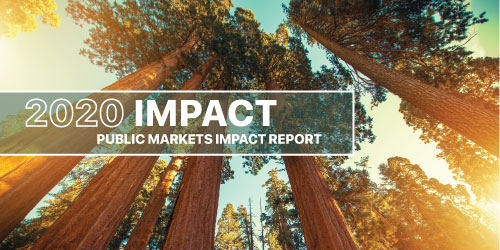This webinar dives into Sonen’s latest framework on investing in sustainable real estate. Also, see the expanded Q&A below where we respond to questions we did not get to during the live webinar:
Q&A Continued
- Do you have a stat for just residential buildings’ GHG emissions and energy use? (trying to figure out how much of 33% GHG and 40% energy use is commercial vs residential)
We rely on related information from the Energy Information Agency. The information you’re looking for is located here: http://www.eia.gov/totalenergy/data/monthly/#consumption
- In general, would you say that real estate investments in “green” development projects are more expensive than more traditional development?
It depends. For investors, up-front costs related to “green” building can be higher due to additional expenses related to “greening” a building (insulation, for example, or more expensive technologies within the structure). But these up-front costs result in on-going cost savings due to increased efficiencies (water or energy savings, for example).
In addition, “green development” can demand higher rents due to tenants’ interest and such amenities often correlate to higher loyalty among tenants. As a result, the initial higher investments pays off in a few years and increases the overall value of the property.
- How do you measure the financial impact/benefit from the sustainability/impact themes (e.g. energy savings) – what have your results been so far?
As noted in the previous question, there are undoubtedly opportunities for financial gain resulting from increasing the efficiency and environmental performance of a building, as well as the overall desirability of the building.
Many real estate fund managers can calculate these amounts scientifically and know with some precision what financial benefits will accrue as a result of installing energy efficient lighting, for example. Also, higher quality building can demand increased rents in the marketplace vs. regular buildings.
- How do you ensure affordability provided that there is an increased investment of water and energy efficiency enhancements in the building? What if tenants don’t understand or are indifferent to such enhancements?
Affordability in the case of Sonen’s investments are evaluated by tenants’ respective annual incomes, and how those figures relate to Area Median Incomes (AMI).
While the target beneficiary of an affordable housing opportunity may be indifferent to the sustainability characteristics of the property in which s/he lives, from Sonen’s view, it is important that we preserve affordable housing options in markets that are severely constrained in the supply of affordable housing solutions.
- Are you tracking correlation between impact performance and financial performance? In particular, have you done any research into ‘green alpha’ effects — the improved performance of a building relative to market performance attributable directly to the building being ‘green’?
We are not explicitly mapping correlation between impact performance and financial performance, although we firmly believe there is such a correlation (in all asset classes, not just real estate).
Among our investments in real estate, there is mounting evidence that tenants are willing to pay a premium for rental units that contain “green” attributes. Furthermore, there is mounting evidence that other perks, such as community-building activities, common spaces, building-wide energy use competitions, and related efforts result in higher rates of tenant satisfaction.
- Could you give a few examples to put the framework into one or two contexts, especially in less affluent communities, in the US and beyond? In these examples, do you perceive the challenges for generating impact differ?
In the US, we work with one real estate manager that dedicates abour 20% of all rental units as “affordable”. Another manager Sonen has closely considered works specifically in low-income areas to rehabilitate and renovate Section 8 housing. In this case, tenants benefit from improved environmental performance in their buildings, as well as an array of community-based offerings (such as on-site child care) that are intended to help foster the well-being of lower income populations.
Abroad, as mentioned in our webinar, we have invested in a South African workforce housing fund that not only redresses the acute shortage of housing for that nation’s working class, but also carries specific, measurable environmental beneifts among the properties it is constructing. These benefits include at least 20% savings on energy use and water use and a 20% reduction in building materials for new construction (relative to typical construction in that nation).
- What real estate companies are focused on tenant well-being? And how is well-being measured?
There are many real estate companies and funds that are explicitly involved in the notion of tenant well-being, and the idea is rapidly gaining momentum as these property managers realize the positive results of taking care of their key stakeholders, the tenants.
For reference, visit GRESB.org, an industry-driven organization that is commited to assessing the ESG performance of real estate portfolios. In particular, see this link that names nearly 100 real estate organizations that undertake GRESB’s Health and Well Being Assessment.



